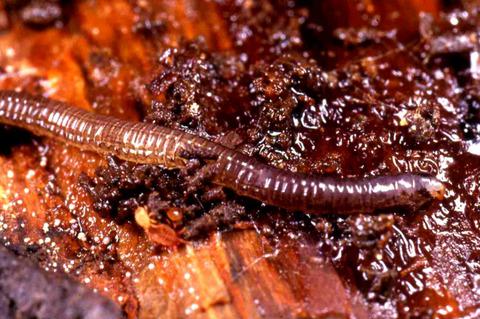当前位置:
X-MOL 学术
›
Funct. Ecol.
›
论文详情
Our official English website, www.x-mol.net, welcomes your feedback! (Note: you will need to create a separate account there.)
Isotope analyses of amino acids in fungi and fungal feeding Diptera larvae allow differentiating ectomycorrhizal and saprotrophic fungi‐based food chains
Functional Ecology ( IF 5.2 ) Pub Date : 2020-08-09 , DOI: 10.1111/1365-2435.13654 Melanie M. Pollierer 1 , Stefan Scheu 1, 2 , Alexei V. Tiunov 3
中文翻译:

真菌和真菌摄食双翅目幼虫中氨基酸的同位素分析可区分基于外生菌根和腐生真菌的食物链
更新日期:2020-08-09
Functional Ecology ( IF 5.2 ) Pub Date : 2020-08-09 , DOI: 10.1111/1365-2435.13654 Melanie M. Pollierer 1 , Stefan Scheu 1, 2 , Alexei V. Tiunov 3
Affiliation

|
- Both ectomycorrhizal (ECM) and saprotrophic fungi are fundamental to carbon and nutrient dynamics in forest ecosystems; however, the relative importance of these different fungal functional groups for higher trophic levels of the soil food web is virtually unknown.
- To explore differences between fungal functional groups and their importance for higher trophic levels, we analysed isotopic composition of nitrogen and carbon in amino acids (AAs) and bulk tissue of leaf litter, fungi and fungal‐feeding Diptera larvae.
- By accounting for isotopic variability of utilized substrates, compound‐specific isotope analyses of nitrogen in AAs yielded more realistic results for the trophic position of fungi than bulk isotope analyses, with converging trophic positions of saprotrophic and ECM fungi.
- Saprotrophic and ECM fungi possessed different AA δ13C signatures separating fungal functional groups and their consumers in fingerprinting approaches, thereby allowing to trace energy fluxes from these basal resources to higher trophic levels.
- A pronounced isotopic fractionation even in essential/source AAs of fungal‐feeding Diptera larvae necessitates further studies on tissue‐/compound‐specific isotopic differences in fungi and on potential supplementation by gut micro‐organisms.
- The results highlight the potential of compound‐specific isotope analysis of amino acids to identify and integrate contributions of different fungal functional groups to higher trophic levels in soil food webs.
中文翻译:

真菌和真菌摄食双翅目幼虫中氨基酸的同位素分析可区分基于外生菌根和腐生真菌的食物链
- 外生菌根(ECM)和腐生真菌均是森林生态系统碳和养分动态的基础。然而,这些不同的真菌官能团对于较高营养水平的土壤食物网的相对重要性实际上是未知的。
- 为了探索真菌功能基团之间的差异及其对更高营养水平的重要性,我们分析了凋落物,真菌和以真菌为食的双翅类幼虫的氨基酸(AA)和大块组织中氮和碳的同位素组成。
- 通过考虑利用的底物的同位素变异性,AA化合物中氮的化合物特异性同位素分析比真菌同位素分析提供了更真实的真菌营养位置分析结果,腐化营养和ECM真菌的营养位置一致。
- Saprotrophic和ECM真菌拥有不同的AAδ 13个C ^签名中加入指纹的方法分离真菌官能团和他们的消费者,从而使从这些基础资源,以更高的营养水平微量能量通量。
- 即使在以真菌为食的双翅目幼虫的必需/源氨基酸中也要进行明显的同位素分馏,因此有必要进一步研究真菌中组织/化合物特异性同位素的差异以及肠道微生物潜在的补充作用。
- 结果突出了氨基酸的化合物特异性同位素分析在识别和整合不同真菌官能团对土壤食物网中较高营养水平的贡献方面的潜力。



























 京公网安备 11010802027423号
京公网安备 11010802027423号